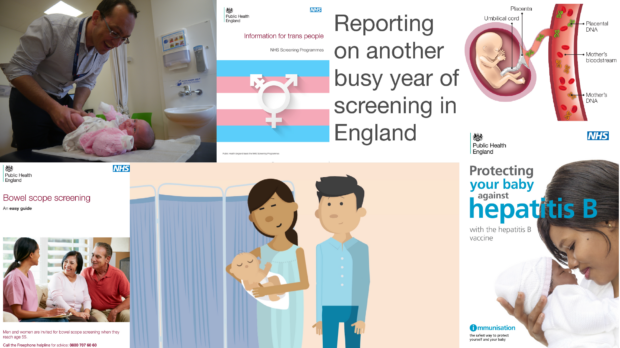
Today we have published our report that celebrates the work of the NHS screening programmes in England during 2017 to 2018 (1 April 2017 to 31 March 2018).
During those 12 months, we screened:
- 3.2 million women for cervical abnormalities
- 2.6 million people for bowel cancer
- 2.2 million people for diabetic eye disease
- 2.1 million women for breast cancer
- 660,000 pregnant women for infectious diseases and to identify if their unborn baby has a major physical or genetic condition
- more than 640,000 babies for 15 conditions, including sickle cell disease and cystic fibrosis
The NHS Screening Programmes in England 2017 to 2018 report is full of examples of the hard work and expertise of colleagues in PHE and NHS England working together along with the local providers and commissioners of screening services.
We have focused particularly on our work to reduce inequalities in screening.
Examples featured include how we now use national data to help identify and tackle inequalities in cervical screening, working in conjunction with NHS Digital and Jo’s Cervical Cancer Trust.
We also highlight the work we have done to develop easy guides to screening for people with a learning disability who may find it more difficult to access screening because of a lack of understanding, embarrassment or fear.
Trans and non-binary people also often face barriers to screening because they may not know what screening they are eligible for, or may not be invited because of the gender they are registered as with their GP. We explain how we have addressed this issue by developing and promoting a new national leaflet for trans and non-binary people about bowel cancer, breast, cervical and AAA screening, including how to access additional support and advice.
In addition, we have included high level screening and outcome data for each of the 11 NHS population screening programmes and there is a foreword by PHE Chief Knowledge Officer John Newton.
I would like again to take this opportunity to thank all the PHE Screening teams, NHS England colleagues and other partners for their continued hard work. I hope you enjoy the report.
PHE Screening blogs
PHE Screening blogs provide up to date news from all NHS screening programmes. You can register to receive updates direct to your inbox, so there’s no need to keep checking for new blogs. If you have any questions about this blog article, or about population screening in England, please contact the PHE screening helpdesk.